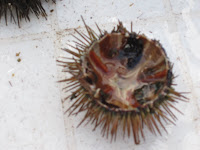Spring has sprung in many parts of the U.S. or will soon, so it is time for wine lovers to break out the dry rosé. I’m a firm believer that dry rosés can, and should, be drunk all year round, but spring is when the new vintage is traditionally released and the bottles usually don’t last long – at least not in my house.
They’re getting popular in other houses, too. Rosé sales grew at five times the rate that total table wine sales in the U.S. did last year. A pair of studies shows dry rosé wine growing rapidly as a category. Provence, in France, is the birthplace of dry rosé wine, the world’s leading rosé region and the fastest-growing French region in exports of wine to the U.S. market.
Dry rosé wines are often made from Pinot Noir, Cabernet Sauvignon, Cabernet Franc and other red grape varieties in much the same way red wines are, except their skins are allowed to soak with the grape juice for a short time – just enough to tint the juice a pink or light red color. They are not for aging, but for drinking fresh and young. Rosés are also known as rosado in Spain and rosato in Italy.
Here is a sampling of some roses that have crossed my tongue in the recent past. I recommend them all (or I wouldn’t list them). All reasonably priced, these wines possess another feature I love: they are all moderate or low in alcohol (13 percent alcohol or less). Enjoy.
* * * *
Albrecht Brut Rosé, Non-vintage, from northern France. 100% Pinot Noir, dry, crisp, soft coral color. Sparkling wine made the same way as Champagne. $19.99
* * * *
Lombardo Salvatore Nero D’Avola Rosado 2010. From Sicily.
* * *
Cotes du Rhone "Belleruche," M. Chapoutier. Lovely, delicate, pale pink color. Made from Grenache grapes, medium weight, with red fruit flavors. Somewhat spare and lean, great palate-cleanser food wine. $12.99
* * *
Bieler Père et Fils Rosé 2010
. Pale salmon color, medium weight in the mouth, substantial, yet restrained, palate. From Provence. $12
* * *
Jaja de Jau Rosé 2010
. The color of cranberry juice with flavors as bold as its hue. Juicy, vibrant fruit, tempered by acidty. From Southern France. $9.99
***
Gran Feudo Rosado 2009 From Grenache grapes, bright and fresh taste, lively acid, from Navarra, Spain $10
* *
Les Deux Rives Rose 2010 From Southern France, pale in color, and lean and delicate. $9.99
* *
Torrecilla Rosado The region this wine comes from, Navarra, Spain, is famous for its rosés. Lean and a bit steely. $10
* *
Benessere Rosato 2009 Almost a red wine in color and weight, big palate, a touch of sweetness. Napa Valley. $16












